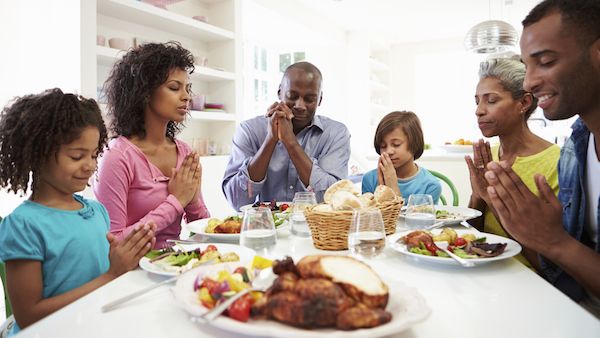Our kids’ youth pastor had joined us for dinner one evening. As always, we had joined hands and prayed before diving into the meal. But when we had finished eating and joined hands again to “return thanks,” as we called the prayer-after-eating, Mike looked surprised.
After “amen,” he asked why we prayed before the meal (like practically everyone else) as well as after eating. I explained that we did it that way for several reasons.
First, I said, “there’s the command.”
“Command? What command?”
I smiled and told him that our Jewish friends and neighbors typically give thanks after they eat, because the Torah says, “When you have eaten and are satisfied, praise the Lord your God for the good land he has given you.” (Deuteronomy 8:10, NIV)
He admitted he’d never noticed that verse about praying after you “have eaten and are satisfied.”
“Plus,” I added, “I once heard or read someone say, ‘It’s one thing to be grateful when you are hungry, and food is placed before you, but it’s something else entirely to remember to express gratitude when your belly is full and your needs are met.” I said that I wanted both forms of “grace” to be present and visible in my life, and in my children’s lives.
He seemed appropriately impressed, though I’ve never asked him since (he’s now the pastor of a large church in a distant land) if he emulated our practice.
I recommend it, though—both “saying grace” before a meal and “returning thanks” after eating (of course, I’m aware that many people use the phrase “returning thanks” to refer to prayer before meals, but somewhere along the line I adopted the phrase to signify the second “grace”).
Because whoever it was I quoted to Mike (I long ago forgot the source of that nugget of wisdom), I think he or she is right. And most of us—almost certainly you, if you’re reading this post—have ample cause to give thanks both when we are hungry and when we are satisfied.






